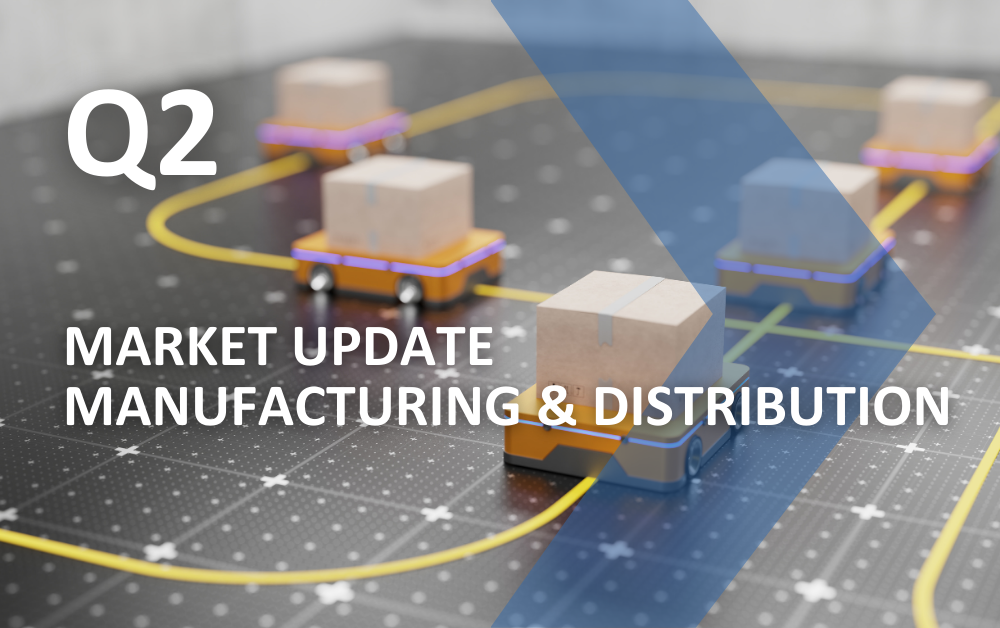1. Profitability Pressures Building in Manufacturing Sector
The latest data from global manufacturing surveys indicates that the industry is beginning to experience margin compression because of several near-term trends. First, many global manufacturers were reporting higher input costs at the end of April and early in May. Higher input costs are primarily rising due to increases in global transportation costs and higher raw material prices.
As an example, copper prices at the time of writing were higher by 30% YTD and were 35% higher vs. May of 2023. Challenges with mining capacity in some global markets coupled with a surge in demand for electrical and computer wiring have pushed prices higher. Other commodities used in manufacturing like nickel, some chemicals, and some paper/plastics are still elevated.
Core petroleum prices are also 8.5% higher YTD and remain 15% higher year-over-year at the time of writing. That, plus Red Sea disruptions, have pushed transportation costs up by nearly 25% across most trade lanes, which is part of the sharp increase in input costs experienced by manufacturers in April and early May. General rate increases will keep many of these transportation cost increases in place through much of the next two quarters.
Unfortunately, on the revenue side of the equation, customers were also starting to push back on finished goods prices. Surveys showed that manufacturers were having a difficult time getting price increases to “stick” with customers. This was creating some margin compression on manufacturers, affecting plans to hire, invest in expansion, and generally pushed many into a cash conservation mode.
Some business associations were reporting a notable change in attendance at conferences and trade shows. Namely, companies were still sending attendees to conference but the number of employees attending was being trimmed to control costs.
The good news is that most manufacturers around the world reported general optimism concerning the next 6-12 months but will remain cautious in the meantime. Consumer spending is expected to remain stable and corporate investment in construction, automation and robotics, and other factors that improve productivity are still showing resilience and strength.
2. Can Manufacturing Construction Continue to Break Records?
Nonresidential construction activity has been one of the anchors of the US economy throughout much of 2023. But the construction of manufacturing facilities has been the star within the nonresidential construction sector. After years of talking about expanding US manufacturing capacity, companies from all over the world are spending on physically increasing US manufacturing output. Much of this is a result of the 2021/2022 global supply chain crisis in which many critical products were out of stock for extended periods of time. Many of them important everyday items such as pharmaceuticals, baby formula, toilet paper, and other household items.
In addition, severe gaps in the defense and high tech supply chains emerged and private and public efforts to reduce stockout risk has also helped drive this trend.
Adding to global sourcing complexity, two significant wars started in the past 36 months have added urgency for companies for creating supply chain continuity. The disruption in Red Sea shipping patterns roiled global supply chains earlier this year, and many are still trying to recover. The impact continues to strip nearly 20% of the global maritime capacity out of the market, lifting the cost of moving a 40 Foot container between Asia and the rest of the world by nearly $1,000 per unit (nearly a 25% increase in most lanes) based on the latest General Rate Increases (GRI) taken in early May.
Spending on construction of manufacturing facilities hit $223 billion at an annualized rate in Q1 which is 4 times the average annual amount experienced in the decade prior to the pandemic. Through the first quarter of 2024, this construction activity was 25% higher than last year during the same period.
Some estimates suggest that there could still be as much as $3 trillion in manufacturing relocation back to the US/USMCA markets still to take place. Many projects are in the planning stages, and several are delayed because of labor or material shortages.
Lastly, it is important to note that most of these expansion projects are being driven by the desire to diversify global sourcing risk. Very few firms that are sourcing in China or other parts of Asia are withdrawing 100% of their sourcing from the region. Most are now executing a global diversification strategy in which they are increasing sourcing capacity in the US and USMCA so that they can better manage stockout risk, changes in tariffs and tax risk, and fluctuating currencies.
In any event, this is a significant trend, and it will change US distribution, raw material demand and availability, labor, and other factors.

